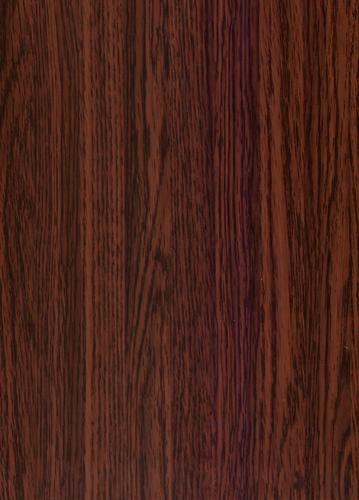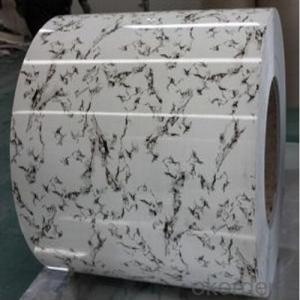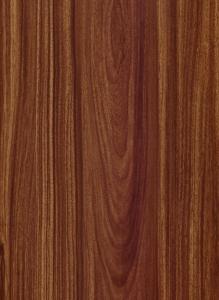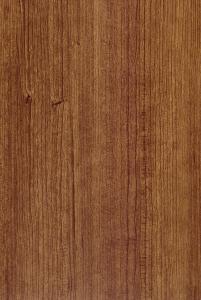Aluminum Wood Grain Coating Coil
OKorder Service Pledge
OKorder Financial Service
You Might Also Like
Aluminium coated sheetand coil choose aluminium sheet coil as raw material, after de-ester, cleaning,passivation layer processing, and then painting on this basis, the paint areprovided by famous international companies like PPG and Valspar from UnitedStates or Becker from Sweden, represent the most advanced level in the world.After the test of exposure by natural light in Florida, the quality assurance is more than morethan 20 years. As poor performance of color coated steel corrosion, rust,yellow rust after a large amount of the deficiency of serious impact on thebuilding's overall appearance. However, because of the advantages of rawmaterials, Aluminium coated coil have a high strength, corrosion resistance,high weather resistance, can be used recycle, save energy and protect theenvironment and other characteristics. Not only have the same strength with colorcoated steel, but also overcome the shortage of color coated steel. So, the Aluminiumcoated coil has been widely used as roofing and ceiling decorative envelopesystem board in modern constructions like large factories, exhibition halls,stadiums, airports, train station hospital and so on. We can choose Aluminiumcoated coil in different thickness and color, by cutting, pressing, punching,bending and other follow-up molding process for large span, the larger theoverall roofing, wall decorative panels used in construction; or cut them intosmall panels by bending, stamping mold or other processing for indoordecorative roofing plate; we can also composite them with polyurethane foam oraluminium honeycomb for energy-saving decorative wall plates.
Alloy | 1050,1060,1100,3003,3004,3005,3104,3105,5052,5005,8011 |
Temper | O,H42,H44,H46,H48 |
Thickness (mm) | 0.25mm-1.5mm for aluminium coated coil; 1.50mm-4.0mm for aluminium coated sheet. |
Width (mm) | 100mm to 2000mm |
Length (mm) | 800mm to 6000mm for sheet |
- Q: Is it possible to utilize aluminum in the construction of automobiles?
- <p>Yes, aluminum is widely used in automobiles due to its lightweight, high strength, and excellent corrosion resistance. It is commonly found in engine components, body panels, and wheels. The use of aluminum can lead to reduced vehicle weight, which improves fuel efficiency and reduces emissions. Additionally, aluminum's recyclability makes it an environmentally friendly choice for automotive manufacturing.</p>
- Q: Explain the differences between aluminum and iron, including their properties and uses.
- <p>Aluminum and iron are distinct metals with different properties and uses. Aluminum is lightweight, corrosion-resistant, and has a lower melting point, making it ideal for applications like beverage cans, aircraft construction, and electrical wiring. It is a good conductor of heat and electricity but is less strong than iron. Iron, on the other hand, is heavier, stronger, and has a higher melting point. It is a key component in steel, which is used extensively in construction, automotive, and machinery due to its strength and durability. Iron is also magnetic, unlike aluminum, and is crucial in electromagnetism applications.</p>
- Q: Is it possible to utilize aluminum in the manufacturing of components for aerospace applications?
- <p>Yes, aluminum is widely used in the aerospace industry for making various components due to its high strength-to-weight ratio, corrosion resistance, and ease of fabrication. It is commonly used in aircraft structures, wings, fuselage, and engines. Aluminum alloys are preferred for their excellent fatigue resistance and ability to withstand high temperatures and stresses encountered in flight.</p>
- Q: This question asks for the amount of energy needed to produce a single aluminum ingot.
- <p>The energy required to produce an aluminum ingot varies based on production methods and efficiency. On average, it takes about 14 to 25 kWh of electricity to produce one kilogram of aluminum. This high energy consumption is due to the electrolytic process used to extract aluminum from its ore, bauxite. The Hall-H茅roult process is the dominant method, which involves passing an electric current through a bath of molten cryolite to reduce aluminum oxide to aluminum metal. Energy efficiency in aluminum production has been improving, but it remains a significant factor in the overall carbon footprint of aluminum products.</p>
- Q: Is there any health risk associated with using pure aluminum cookware?
- <p>Using pure aluminum cooking utensils is generally considered safe for most people. However, there are some concerns regarding the potential for aluminum to leach into food, especially at high temperatures or with acidic foods. While the health risks are still a subject of debate, it's recommended to use aluminum cookware with a protective coating or opt for utensils made from other materials like stainless steel or cast iron for long-term health considerations.</p>
- Q: What are some important safety measures to take when handling or working with aluminum?
- <p>When working with aluminum, it's crucial to take several safety precautions. Always wear appropriate personal protective equipment (PPE), including safety glasses, gloves, and a dust mask to prevent inhalation of aluminum dust. Ensure good ventilation to avoid build-up of fumes, especially during welding or cutting processes. Use proper tools designed for aluminum to prevent sparks and overheating. Be aware of the fire hazard; aluminum can burn at high temperatures, so have fire extinguishers readily available. Finally, be cautious with chemicals used in aluminum processing, as they can be harmful; always follow the manufacturer's safety instructions.</p>
- Q: This question asks about the consequences of corrosion on aluminum, including how it affects the material's properties and performance.
- <p>Corrosion on aluminum can lead to a loss of structural integrity, reduced strength, and increased brittleness. It can cause pitting, which is localized corrosion that leads to the formation of small holes or cavities on the surface. Over time, this can lead to material failure. Corrosion can also alter the appearance of aluminum, causing discoloration and a rough texture. In extreme cases, it can lead to the complete degradation of the aluminum, resulting in the loss of the material's functionality. Proper maintenance, such as applying protective coatings or using corrosion-resistant aluminum alloys, can mitigate these effects.</p>
- Q: What are the various applications and benefits of using aluminum in the automotive industry?
- <p>Aluminum is widely used in automobiles for its lightweight properties, which improve fuel efficiency and reduce emissions. It's used in engine parts, such as pistons and cylinder heads, to decrease weight and increase performance. Aluminum is also used in body panels, wheels, and suspension components, enhancing vehicle handling and reducing unsprung weight. Additionally, aluminum's corrosion resistance makes it ideal for exterior parts, and its recyclability aligns with environmental sustainability efforts in the automotive industry.</p>
- Q: Is it possible to utilize aluminum in the creation of innovative tools and equipment?
- <p>Yes, aluminum can be used to make new types of tools and equipment. It is a lightweight, durable, and corrosion-resistant metal, making it ideal for various applications. Aluminum's high strength-to-weight ratio and ease of machinability allow it to be used in the manufacturing of tools, machinery parts, and equipment across industries such as automotive, aerospace, and construction. Additionally, its recyclability and abundance make it an environmentally friendly choice for new tool and equipment designs.</p>
- Q: This question asks about the various applications of aluminum alloys in the automotive industry.
- <p>Aluminum alloys are extensively used in automobiles for their lightweight properties and high strength. They are commonly found in engine components, such as cylinder blocks and heads, to reduce weight and improve fuel efficiency. Aluminum alloys are also used in body panels, wheels, and suspension systems to decrease the overall vehicle weight, enhancing performance and reducing emissions. Furthermore, they are utilized in heat exchangers, such as radiators, and various interior components due to their corrosion resistance and durability. The use of aluminum alloys in vehicles contributes to better fuel economy, improved handling, and reduced environmental impact.</p>
Send your message to us
Aluminum Wood Grain Coating Coil
OKorder Service Pledge
OKorder Financial Service
Similar products
Hot products
Hot Searches
Related keywords
























